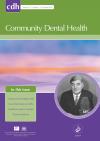Community Dental Health

- Cover Date:
- December 2016
- Print ISSN:
- 0265 539X
- Vol:
- 33
- Issue:
- 4
The acceptability of healthcare: from satisfaction to trust
Abstract: The assessment of healthcare quality increasingly emphasises lay acceptability, as evidenced by the emergence of patient satisfaction and patient-centred care in the literature and in policy. In this paper we aim to provide a conceptual overview of acceptability and propose ways to enhance its assessment. Firstly, we map how acceptability’s importance in quality assessments has increased and how the term acceptability has been used as synonymous with patient satisfaction, despite it being a broader concept. We then critique the concept of patient satisfaction and its measurement and challenge its use as an indicator of acceptability and quality. By drawing on our research and those of others, the second half of the paper describes how trust in clinicians and health services has emerged as a related
concept, including a theoretical discussion of trust in healthcare outlining how it can be built, undermined and abused. We propose trust as an alternative indicator of acceptability in healthcare quality and review its measurement. Finally, we consider how healthcare policy may impact on trust and make recommendations for future research.
Key words: healthcare, patient satisfaction, patient-centred care, acceptability, quality, policy
doi:10.1922/CDH_3902Dyer10
- Article Price
- £15.00
- Institution Article Price
- £
- Page Start
- 242
- Page End
- 251
- Authors
- T.A. Dyer, J. Owens, P.G. Robinson
Articles from this issue
- Title
- Pg. Start
- Pg. End
- An intervention study to assess the effectiveness of a reminder telephone call in improving patient appointment attendance at a Community Dental Service clinic
- 239
- 241
- Patient characteristics in relation to dental care payment model: capitation vs fee for service
- 252
- 256
- Psychometric properties of the English version of the Oral Health Literacy Adults Questionnaire - OHL-AQ
- 274
- 280
- Approximal caries increment in relation to baseline approximal caries prevalence among adolescents in Sweden with and without a school-based fluoride varnish programme
- 281
- 285
- Variation in methods used to determine national mean DMFT scores for 12-year-old children in European countries
- 286
- 291
- The relationship between maternal smoking during pregnancy and parental-reported experience of dental caries in Indigenous Australian children
- 297
- 302
- Dental problems and Familismo: social network discussion of oral health issues among adults of Mexican origin living in the Midwest United States
- 303
- 308
